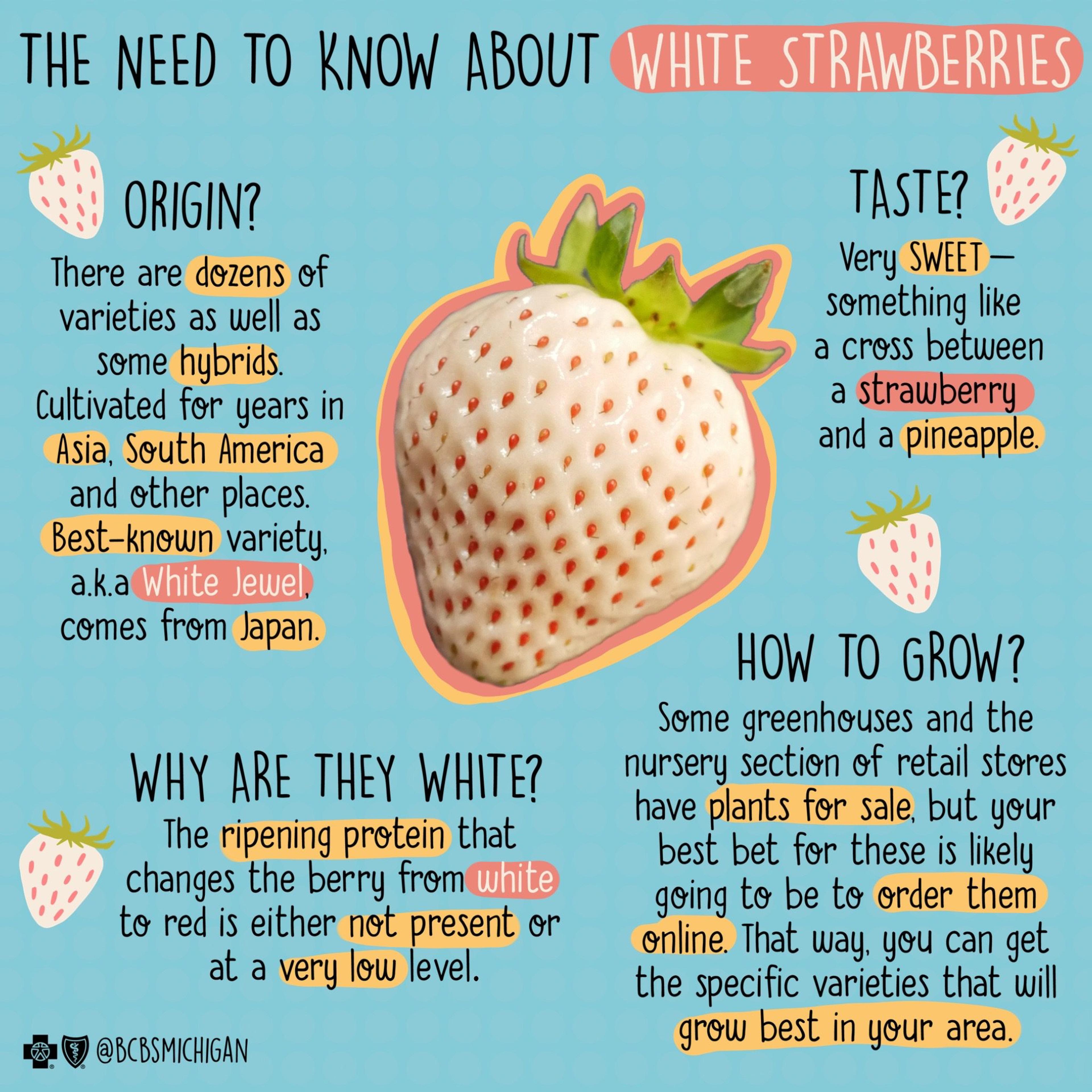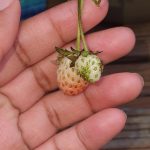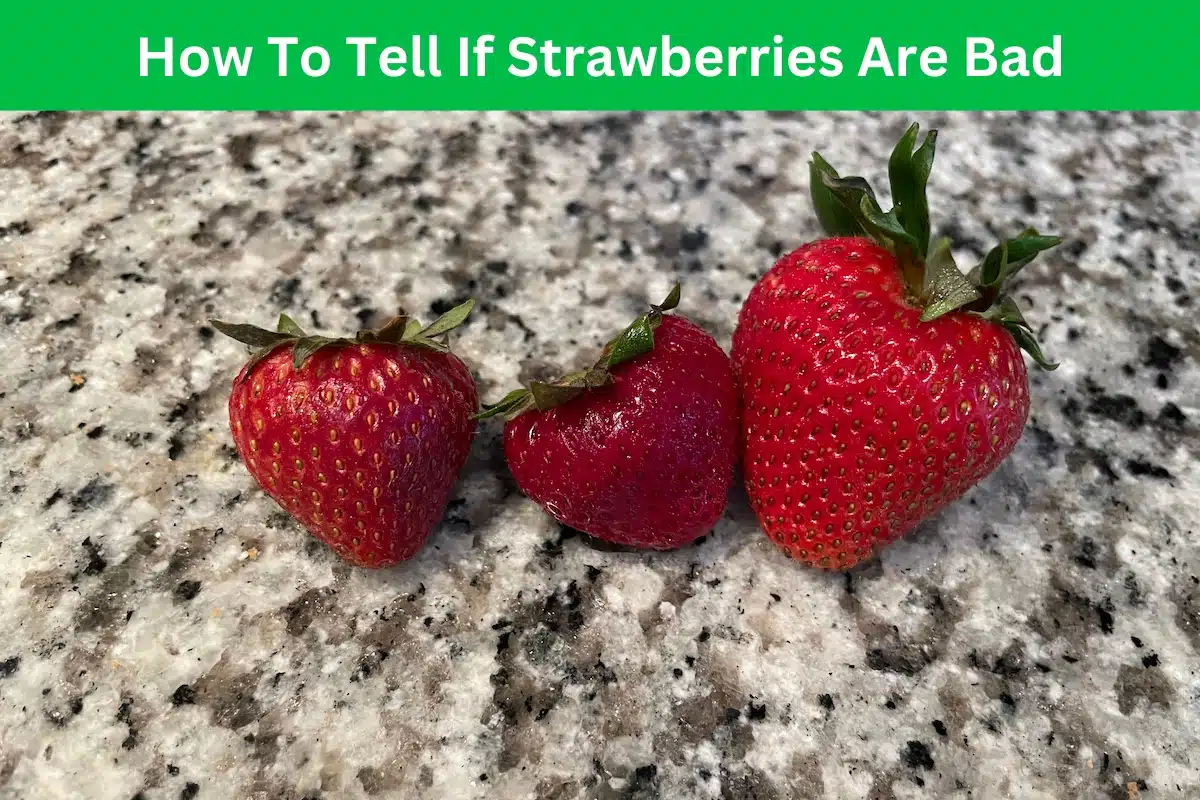A white strawberry may indicate an unripe or unripenable fruit due to various factors. White strawberries can also result from a genetic mutation or a viral infection.
When a strawberry is white, it could be a sign that it is not yet fully matured or it may not have the ability to ripen to its red color. Factors such as lack of sunlight, cooler temperatures, or certain diseases can also cause strawberries to remain white.
If a strawberry is always white, it is likely due to a genetic mutation, which inhibits the production of red pigments. Additionally, viral infections can cause white streaks or spots on strawberries. Understanding the causes of white strawberries can help in ensuring healthy and flavorful fruit yields.
Reasons For White Strawberries
Albino strawberries lack pigment due to a genetic mutation.
White strawberries can result from specific strawberry varieties.

Credit: www.ahealthiermichigan.org
Albino Strawberries
Albino strawberries are white-colored strawberries that lack the typical pigmentation found in red strawberries.
Lack Of Pigmentation
White strawberries lack anthocyanin, causing their unique appearance and mild flavor.
Rare Occurrence
Albino strawberries are rare and prized for their novelty and delicate taste.
Varietal Differences
When it comes to strawberries, we often picture them as red, juicy, and bursting with flavor. However, you may come across an unexpected sight when you stumble upon a white strawberry. Don’t be alarmed, because a white strawberry does not indicate that something is wrong with your fruit. In fact, it can be quite a fascinating find! White strawberries are a result of varietal differences, specifically different genetic makeup and natural mutations. Let’s explore these factors in more detail.
Different Genetic Makeup
The color of a strawberry is primarily determined by the presence of pigments called anthocyanins. These pigments give strawberries their vibrant colors, ranging from red to pink. However, certain varieties of strawberries possess a genetic makeup that inhibits the production of these pigments.
When a strawberry lacks these pigments, it appears white. This genetic trait is generally inherited and specific to certain varieties. It is important to note that a white strawberry is not an indication of inferior quality or ripeness. It is simply a result of its unique genetics.
Natural Mutation
In addition to the genetic makeup of a strawberry variety, natural mutations can also cause a strawberry to be white. Mutations are spontaneous changes in the DNA of an organism that can occur during growth and development. These mutations can lead to variations in physical characteristics, such as color.
When a strawberry experiences a mutation that affects its pigment production, it can result in a white strawberry. These mutated strawberries can still be as flavorful and enjoyable as their red counterparts, even though they may not visually resemble the traditional image of a strawberry.
It is worth mentioning that these mutations can occur naturally or can be intentionally induced through breeding techniques. Plant breeders may deliberately select for certain mutated traits to create new and unique strawberry varieties for farmers and consumers alike.
In conclusion, the occurrence of white strawberries is a fascinating display of the diversity within the strawberry species. It is a testament to the various genetic makeup and natural mutations that exist in different varieties. So, the next time you come across a white strawberry, savor its unique beauty and flavor!
Environmental Factors
When it comes to understanding the unusual occurrence of white strawberries, environmental factors play a crucial role. The conditions in which strawberries are cultivated directly impact their color and overall quality. Lack of sunlight and extreme temperatures are the two primary environmental factors that can cause strawberries to turn white.
Lack Of Sunlight
The lack of sunlight can inhibit the production of chlorophyll in strawberries, preventing them from developing their characteristic red color. Strawberries require adequate sunlight to undergo the process of photosynthesis, which affects their pigmentation. Under low-light conditions, strawberries may become pale or white in color, indicating a deficiency of chlorophyll accumulation.
Extreme Temperatures
Extreme temperatures, whether excessively hot or cold, can have detrimental effects on strawberry pigmentation. High temperatures can lead to sunburn on the fruit, causing it to lose its red color and appear white. Conversely, exposure to frost or freezing temperatures can damage the cell structure of the strawberries, resulting in white patches or overall discoloration.
Cultural Practices
Understanding the cultural practices that can lead to the development of white strawberries is essential when exploring this intriguing phenomenon. Several factors, including under-ripened strawberries and improper soil conditions, play a pivotal role in the coloration of these delicate fruits.
Under-ripened Strawberries
When strawberries are harvested before they fully ripen, they may appear white. This typically occurs when berries are picked too early, limiting the development of their characteristic red pigmentation. As a result, the strawberries remain pale and fail to express their true color and flavor.
Improper Soil Conditions
The health of strawberry plants greatly depends on the soil in which they are cultivated. If the soil lacks essential nutrients or exhibits imbalanced pH levels, the strawberries may turn white. Unfavorable soil conditions can impede the plants’ ability to absorb necessary nutrients, impacting their growth and development.

Credit: www.nytimes.com
Taste And Texture
When a strawberry is white, it typically means it is not fully ripe yet. This may impact its taste and texture, with white strawberries often being less sweet and firm compared to fully ripened red ones. Understanding the differences can help enhance your culinary experience with strawberries.
Milder Flavor
When a strawberry is white, it often indicates a milder flavor compared to its vibrant red counterparts. The taste of a white strawberry is typically described as delicate and subtle, with hints of sweetness that are less pronounced. Although some people might find this milder flavor appealing, others may prefer the stronger, tangier taste of a red strawberry. It’s important to note that the sweetness can vary depending on the specific white strawberry variety and its ripeness level. So, if you’re someone who enjoys a less overpowering taste, a white strawberry might be just what you’re looking for.
Slightly Firmer Texture
In addition to its milder flavor, a white strawberry also tends to have a slightly firmer texture. While red strawberries are known for their juicy and tender flesh, white strawberries tend to be firmer and less succulent. The flesh of a white strawberry has a denser consistency, which can be attributed to its lower water content. As a result, some individuals may perceive the texture of a white strawberry as slightly grainier or less juicy. However, this firmer texture can also be advantageous in certain culinary applications, as it holds up better when used in dishes that require added stability, such as fruit tarts or pies. When it comes to taste and texture, white strawberries offer a unique experience compared to their red counterparts. While they may not possess the same intense sweetness and juiciness, they make up for it with their delicately mild flavor and slightly firmer texture. Whether you enjoy their subtlety or prefer the bolder taste of red strawberries, white strawberries can be a delightful addition to your fruit repertoire. Moreover, their firmer texture can be advantageous in various culinary endeavors, allowing you to incorporate them into different recipes with ease. So, whether you decide to enjoy a white strawberry on its own or experiment with it in a culinary creation, you’re in for a delightful treat.
Uses Of White Strawberries
White strawberries are a rare variant that has a unique flavor and a distinct appearance. They are highly valued for their sweet taste and ornamental value in desserts and gardens. The white color is a result of a genetic mutation, and white strawberries are often considered a delicacy due to their scarcity and delicate flavor.
Aesthetic Purposes
White strawberries are prized for their delicate appearance, perfect for elegant table settings and beautiful dessert presentations. They add a touch of sophistication to any dish.
Culinary Applications
White strawberries are versatile in the kitchen, offering unique flavor profiles that can enhance a wide range of dishes. They can be used in salads, smoothies, and as a topping for cakes and pastries.

Credit: permies.com
Frequently Asked Questions On What Does It Mean If A Strawberry Is White
What Causes A Strawberry To Turn White?
When a strawberry is white, it may be due to a lack of sunlight or improper pollination. This can also be caused by a fungal infection called powdery mildew. Lack of nutrients in the soil can also lead to white strawberries.
Are White Strawberries Safe To Eat?
Yes, white strawberries are safe to eat. They may lack the typical red color, but they are still edible and have a unique taste. In fact, some strawberries are intentionally bred to be white or pale in color, and they offer a slightly different flavor profile.
Can White Strawberries Be Used In Recipes?
Absolutely! White strawberries can be used in a variety of recipes, including salads, jams, sauces, and desserts. Their unique color and flavor can add an interesting twist to classic strawberry dishes. Get creative and experiment with white strawberries in your favorite recipes!
How Do White Strawberries Differ From Red Ones?
White strawberries are generally sweeter and milder in flavor compared to their red counterparts. They also tend to have a softer texture. While they may not have the vibrant color of red strawberries, they offer a distinct taste that some find appealing.
Conclusion
To conclude, finding a white strawberry can be surprising and intriguing. While it may be due to genetic variations, fungal infections, or unripe fruits, it is essential to note that white strawberries have a unique taste compared to their traditional red counterparts.
Regardless of the reason behind their color, exploring these rare berries allows us to appreciate the diversity and unexpected wonders of nature. Keep your eyes peeled for these extraordinary white strawberries and savor their distinctive flavor when you come across them.
Happy strawberry hunting!

I am a graduate of Bangladesh Agricultural University, where I delved into various agricultural disciplines, equipping me with a profound understanding of agriculture. Beyond academics, I have hands-on experience in gardening and crop cultivation. My passion is to embrace sustainable farming and horticulture. With a BSc in Agriculture, I am dedicated to promoting environmentally conscious and efficient agrarian practices.
Bachelor of Science (BSc) in Agriculture (Hons.)
Master of Science. (Sustainable Agriculture & Food Security ) (MS)
Bangladesh Agricultural University




